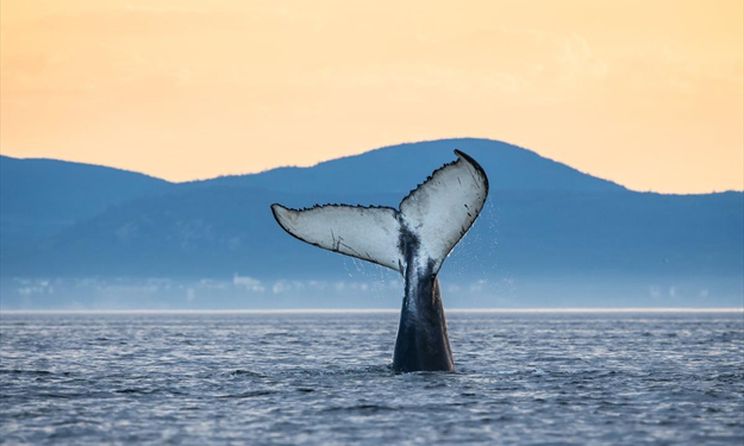
Whale watching in Quebec
One of the world’s best whale-watching destinations is within road-tripping distance of Quebec City: the vast St. Lawrence estuary, where the river’s fresh water starts to become salty and oceanic, and where you’ll find a marine protected area known as the Saguenay—St. Lawrence Marine Park.
Beluga live here year-round, while other species, including blue whales and humpbacks, swim great distances to reach these feeding grounds in summer. You can admire from a close (but responsible) distance on a whale-watching experience with Croisières Essipit, an Indigenous tour operator that takes small groups (12 or 36 passengers) cruising aboard inflatable Zodiac boats. The two-hour tours depart from the village of Les Bergeronnes, about 230 kilometres from Quebec City, and will run this year from June 3 to Sept. 25.
The Big Five in Manitoba
Canada has its own equivalent of the Big Five, the megafauna you might see on a wildlife safari: the moose, black bear, bison, beluga whale and polar bear. Travellers wanting a chance to spot them all can book a whirlwind small-group tour with Frontiers North Adventures with the goal of doing just that.
The eight-day “Canada’s Big Five Safari” itinerary includes multiple wildlife drives through Riding Mountain National Park, about 3.5 hours from Winnipeg. Spanning boreal and deciduous forests, grassland meadows and wetland, it’s home to an estimated 800 black bears, 3,000 moose, 1,800 elk and a herd of around 40 plains bison (which freely roam a 500-hectare enclosure). Then you’ll hop on a flight to the northern town of Churchill — the polar bear capital of the world, and a prime place to scout for beluga whales, too. This year, the trip is offered July 17-24 and Aug. 7-14.
Safari in the Arctic
Come springtime in Nunavut, there’s a unique gathering place for Arctic wildlife: the floe edge, the shifting line where sea ice meets open water. Marine mammals will convene on this surface to take a breather or to hide from predators lurking in the deep. Taking travellers to Pond Inlet, Arctic Kingdom’s “Floe Edge Safari” promises an opportunity to see polar bears and belugas, seals and walruses, and the so-called unicorns of the sea: tusk-brandishing narwhals. Consider them honorary Canadians: about 90 per cent of the world’s narwhals are thought to summer in our arctic.
Lucky birders might also get a chance to visit the Bylot Island Migratory Bird Sanctuary, known for its abundance of thick-billed murres, black-legged kittiwakes and greater snow geese. Beyond wildlife watching, activities include snorkelling or kayaking in the sea ice, and taking in the dramatic landscapes in the glow of the 24-hour sun. This year, small-group departures will be offered from mid-May to early June.
Off-the-grid resort in British Columbia
Travellers wanting the comforts of lodge life and a family-friendly wilderness experience can find both in Desolation Sound, B.C., at the Indigenous-owned Klahoose Wilderness Resort, which opened for its first full season last year. Every all-inclusive stay at the off-the-grid resort includes guided grizzly bear viewing tours in Toba Inlet, on the traditional territory of the Klahoose First Nation.
The scenic journey to the inlet will take you boating past waterfalls and riding through lush coastal rainforest before you reach the six viewing platforms, covered and raised for safety, and set along a salmon-rich river where you can observe grizzlies, quietly and respectfully, for hours. While the resort opens for the season in May, the bears return to feast here beginning around mid-August.
This year, the resort will also offer grizzly-focused travel packages in partnership with Canadian Geographic Adventures, on Oct. 8-12 and Oct. 15-19. The program will include the expertise of a travel ambassador with the Royal Canadian Geographical Society, who’ll make the grizzly tours especially educational, alongside Klahoose’s own guides.